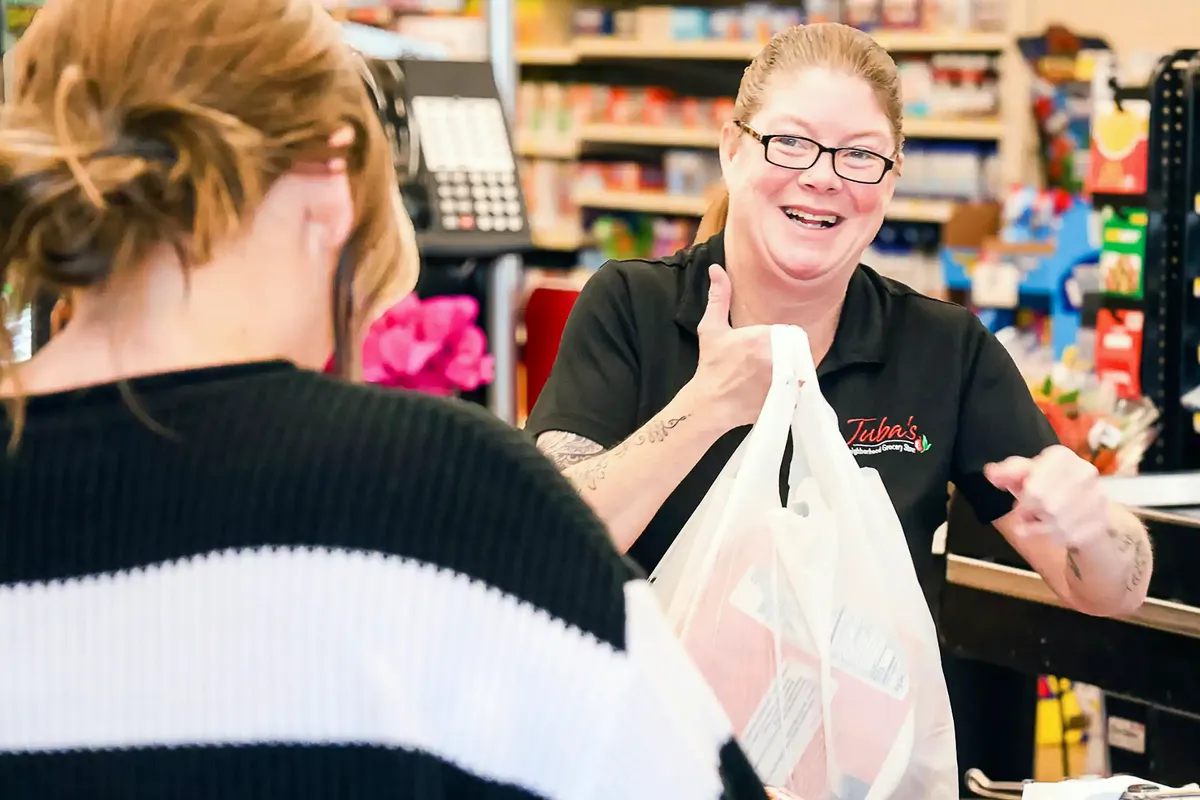Copyright Austin Daily Herald

By Hannah Yang Minnesota’s SNAP recipients will start receiving a reduced amount of benefits this month, but it’s not clear when, or how much they’ll get to buy food. And the benefits are already delayed, leaving many people scrambling to find enough to eat. The delay and cut in SNAP benefits is also hurting small, independent grocers, especially those in small, rural towns who are already struggling to stay afloat. Tim Juba is co-owner and store manager at Juba’s Supervalu in Blue Earth, Minn., of Faribault County. He says he’s already been losing customers, and his sales have declined since the end of the pandemic. And he says a significant number of his customers losing SNAP benefits will hurt his business even more. “These customers who are not getting their SNAP benefits are not coming in to shop,” Juba, 52, who runs the small grocery store with his father and siblings, said. “So that’s going to affect our overall sales, which are already in decline. So we are really concerned about this.” Juba says SNAP recipients make up almost five percent of his sales. More than 1,300 people use SNAP in Faribault County, according to county officials, and 479 of them are children. So Juba says that every dollar lost eats into his already very thin profit margin. “The future doesn’t look great for small independent grocery stores,” Juba said. “Sales are down everywhere. And it’s not just grocery stores … it’s the economy. Grocery stores like ours suffer … and now losing these SNAP customers? Well, we possibly are looking at a very dim future.” Inflation has driven up food prices, making it more difficult for smaller, independent stores like Juba’s to compete with big box retailers, even those that are miles away. Juba said he worries about not being able to sustain his business. “It’s really scary when we know everything on the shelf is higher priced than it was a year ago,” Juba said. “It’s on the top of my mind … what is going to happen if these people aren’t getting their benefits? They need to eat, and where they eat is the grocery store, because they can get their SNAP benefits, and that’s where they can spend them. There aren't a lot of places they can go to spend them.” And Juba worries he might need to cut back to save money, and there are some options that he wants to avoid. “There’s a million things we can do,” Juba said. “But, there’s a lot of things we don’t want to do. Raising prices or cutting labor, which then affects our employees directly. That is something we’ve never really had to deal with. The bottom line is just sales. We’re going to lose out on sales, which means we’re going to lose out on profit, which means we’re going to have to find ways to make up for that profit.” “We’ve been struggling with getting people into the store spending money,” Juba added. “But, times are tough for everybody.” ‘It’s way more than a food problem’ In Minnesota, 45 percent of SNAP recipients live outside of the Twin Cities metro area, according to the Minnesota Department of Children, Youth, and Families. In the last fiscal year, DCYF says the more than 440,000 Minnesotans who rely on SNAP spent more than $1 billion in benefits statewide. More than 3,600 authorized retailers accept SNAP benefits, and DCYF says that every dollar spent by those receiving the Supplemental Nutrition Assistance Program funding generates up to $1.50 in local economic activity — boosting not just grocery and other food retailers, but their suppliers, business partners and neighboring retailers. A pair of federal judges ordered the Trump administration to pay SNAP benefits using more than $4.5 billion in contingency funds this month. The administration had planned to cut off food assistance benefits because of the federal government shutdown. However, that’s still only about half of the $9 billion the government usually pays out for SNAP each month, and Minnesotans who were due to get their funding this week haven’t yet. And that spells trouble for grocery stores, co-ops, convenience stores and farmers markets whose customers rely on those benefits. For rural grocery stores like Juba’s in Faribault County, losing that source of additional money will hit them hard. Nicole Worlds, finance assistance manager for Health and Human Services in Faribault and Martin Counties, calls it “way more than a food problem,” because she says residents in the two counties spend about $500,000 combined in SNAP benefits each month. “So, when you take that much money out of the community, for a lot of our grocery stores, and our businesses, they’re smaller businesses ... and that would have a huge impact,” Worlds said. ‘Essential business’ At Juba’s in the town of Blue Earth, high school home economics teacher Lexi Mandler, 25, buys ingredients for her students to make breakfast burritos the next morning. She knows stores like this well, as her parents run two grocery stores in neighboring towns Mandlery said she knows how important stores like this are in small towns, and when they close, it can crush a community. “Just having this essential business is so crucial to families in our community,” Mandler said. “Just for the needs of different customers that aren’t able to travel, whether that’s age, or just family schedules, they would have to travel, you know, 15, 20, even 30 minutes away to go to the nearest store.”



